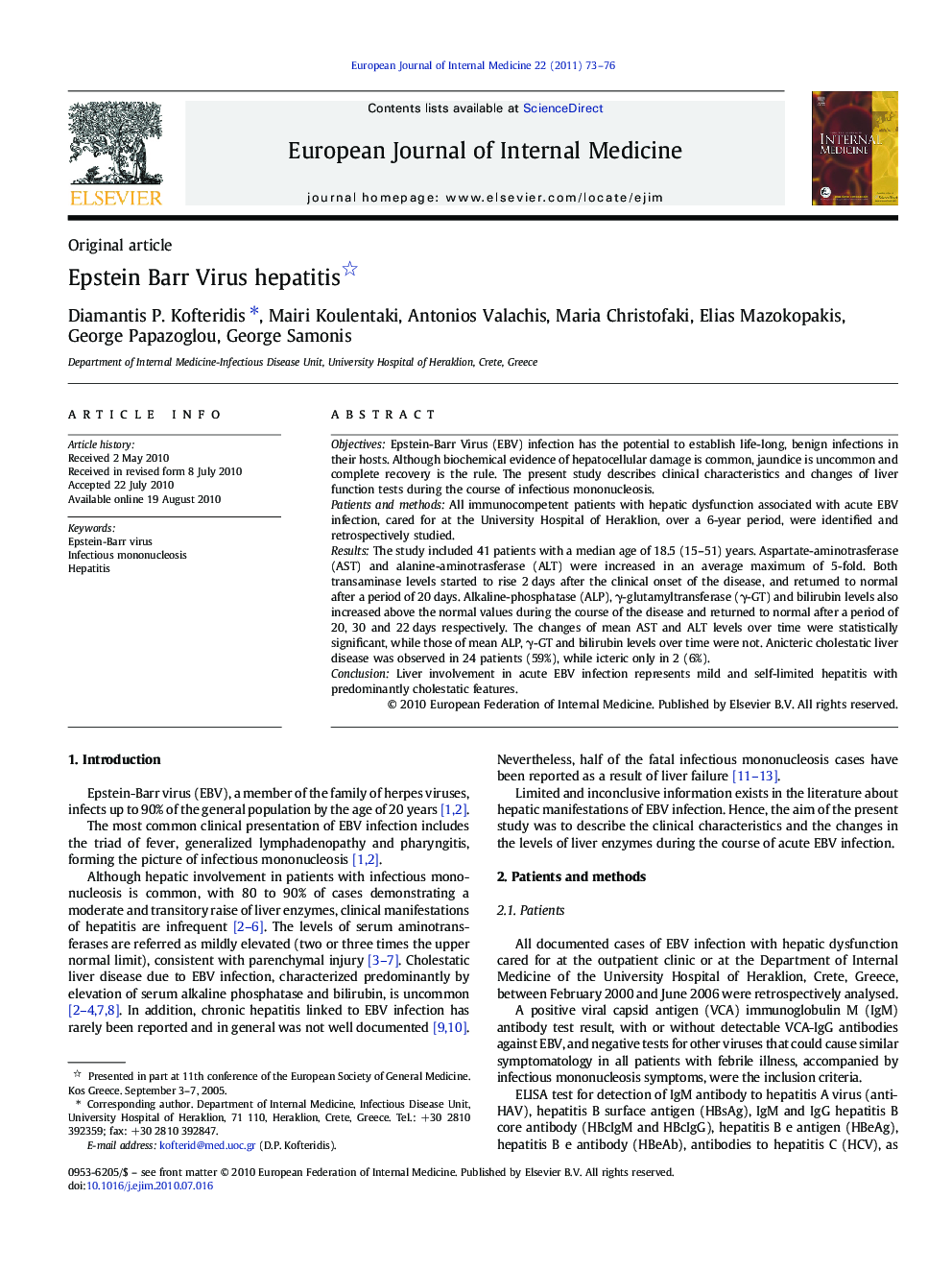| Article ID | Journal | Published Year | Pages | File Type |
|---|---|---|---|---|
| 3466490 | European Journal of Internal Medicine | 2011 | 4 Pages |
ObjectivesEpstein-Barr Virus (EBV) infection has the potential to establish life-long, benign infections in their hosts. Although biochemical evidence of hepatocellular damage is common, jaundice is uncommon and complete recovery is the rule. The present study describes clinical characteristics and changes of liver function tests during the course of infectious mononucleosis.Patients and methodsAll immunocompetent patients with hepatic dysfunction associated with acute EBV infection, cared for at the University Hospital of Heraklion, over a 6-year period, were identified and retrospectively studied.ResultsThe study included 41 patients with a median age of 18.5 (15–51) years. Aspartate-aminotrasferase (AST) and alanine-aminotrasferase (ALT) were increased in an average maximum of 5-fold. Both transaminase levels started to rise 2 days after the clinical onset of the disease, and returned to normal after a period of 20 days. Alkaline-phosphatase (ALP), γ-glutamyltransferase (γ-GT) and bilirubin levels also increased above the normal values during the course of the disease and returned to normal after a period of 20, 30 and 22 days respectively. The changes of mean AST and ALT levels over time were statistically significant, while those of mean ALP, γ-GT and bilirubin levels over time were not. Anicteric cholestatic liver disease was observed in 24 patients (59%), while icteric only in 2 (6%).ConclusionLiver involvement in acute EBV infection represents mild and self-limited hepatitis with predominantly cholestatic features.
